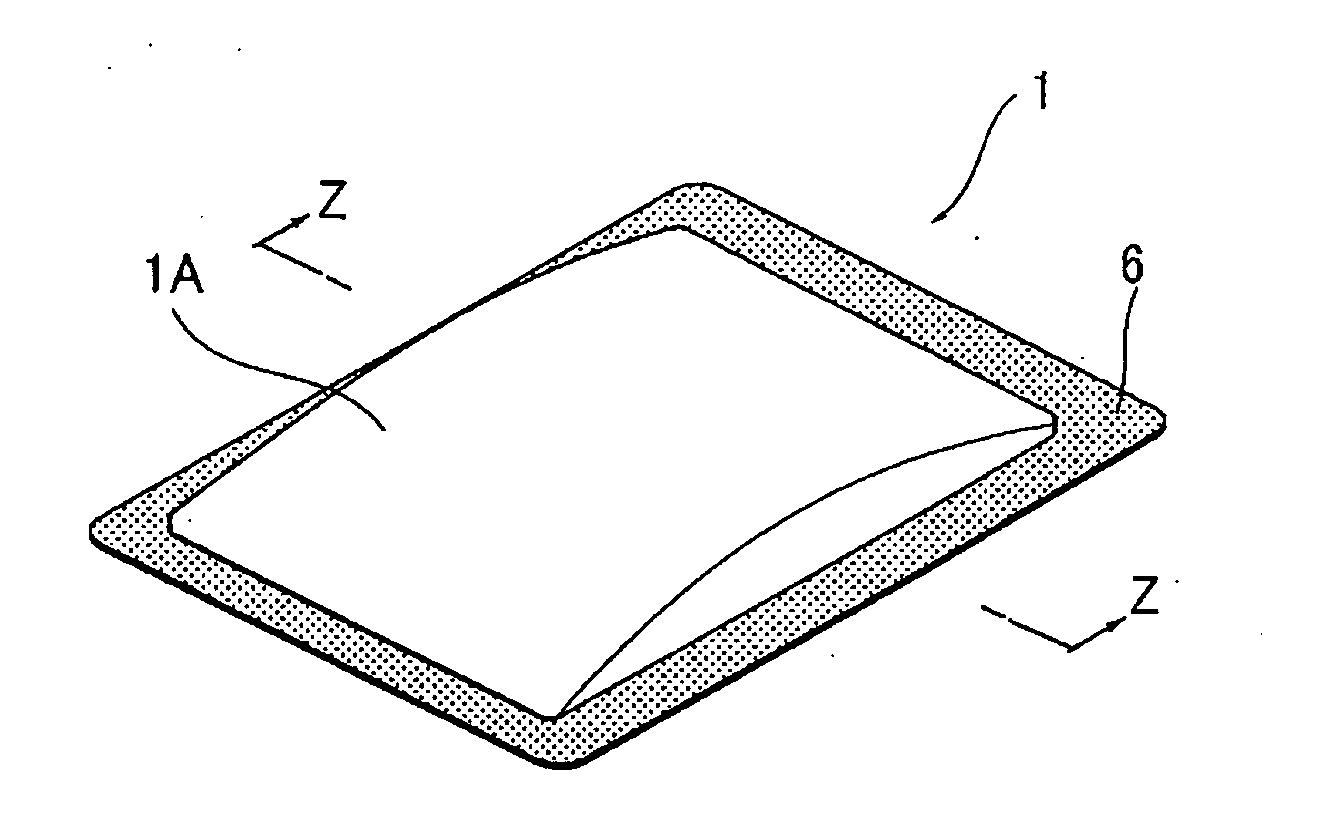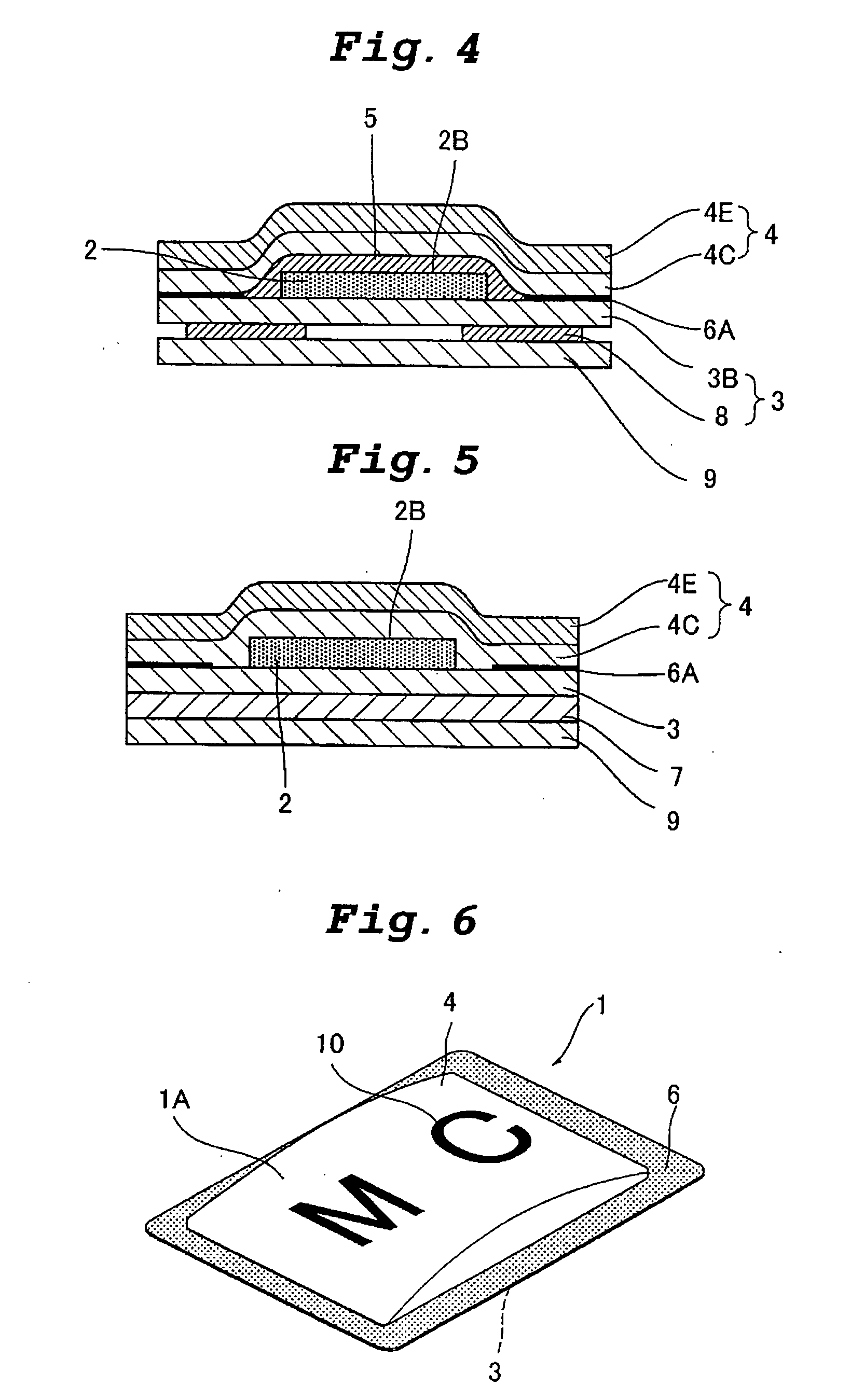Exothermic composition and exothermic element
a technology of applied in the field of exothermic composition and exothermic element, can solve the problems of inability to fully exploit the exothermic property, bad feeling in actual use, and inability to achieve full exothermic
- Summary
- Abstract
- Description
- Claims
- Application Information
AI Technical Summary
Benefits of technology
Problems solved by technology
Method used
Image
Examples
example 1
[0227] Water was added to a mixture of 100 parts by weight of iron powder (DKP manufactured by Dowa Teppun; particle size: not more than 250 μm), 8 parts by weight of active carbon (SA-Super manufactured by Norit; particle size: not more than 300 μm), 4 parts by weight of sodium chloride, 0.15 part by weight of water-absorptive polymer (KI-gel 201K manufactured by Kuraray; particle size: not more than 850 μm), 3.0 parts by weight of wood powder (particle size: not more than 300 μm) and 0.15 part by weight of calcium hydroxide (particle size: not more than 300 μm) followed by subjecting to further mixing to prepare a heat generating composition where water mobility value was 10.
[0228] A non-gas-permeable packing material where polyethylene film 3B was laminated on nonwoven fabric 3E was named a substrate material 3 and, on the polyethylene film 3B, the heat generating composition 2 was layered by means of a molding passing through a die using a trimming die having trimming holes in ...
example 2
[0232] A non-gas-permeable and non-water-absorptive packing material where polyethylene film was laminated on a non-water-absorptive waterproof paper was used as a substrate material and the heat generating composition prepared in Example 1 was layered on the resulting water-proof paper by a molding by passing through a die using a trimming die whereupon a layered heat generating composition product was prepared. Further, a hot melt type pressure-sensitive adhesive was formed thereon by a melt blow method then, using a gas-permeable packing material where nonwoven fabric made of nylon, kraft paper and porous polyethylene film were layered in that order, layering was conducted in such a manner that the surface of the waterproof paper and the surface of the porous polyethylene film were contacted each other and the surroundings were adhered with compression and cut to prepare a rectangular flat heat generating body having 135 mm length, 100 mm width and 8 mm seal width.
[0233] Gas per...
example 3
[0241] As shown in FIG. 3, a substrate material 3 where an acrylate pressure-sensitive adhesive layer 7 was formed on polyethylene film 3B was used instead of the substrate material 3 of Example 1 and the same operation as in Example 1 was conducted to prepare a heat generating body having 135 mm length, 100 mm width and 8 mm seal width. Incidentally, 9 in the drawing shows a releasing film.
PUM
 Login to View More
Login to View More Abstract
Description
Claims
Application Information
 Login to View More
Login to View More - R&D
- Intellectual Property
- Life Sciences
- Materials
- Tech Scout
- Unparalleled Data Quality
- Higher Quality Content
- 60% Fewer Hallucinations
Browse by: Latest US Patents, China's latest patents, Technical Efficacy Thesaurus, Application Domain, Technology Topic, Popular Technical Reports.
© 2025 PatSnap. All rights reserved.Legal|Privacy policy|Modern Slavery Act Transparency Statement|Sitemap|About US| Contact US: help@patsnap.com



